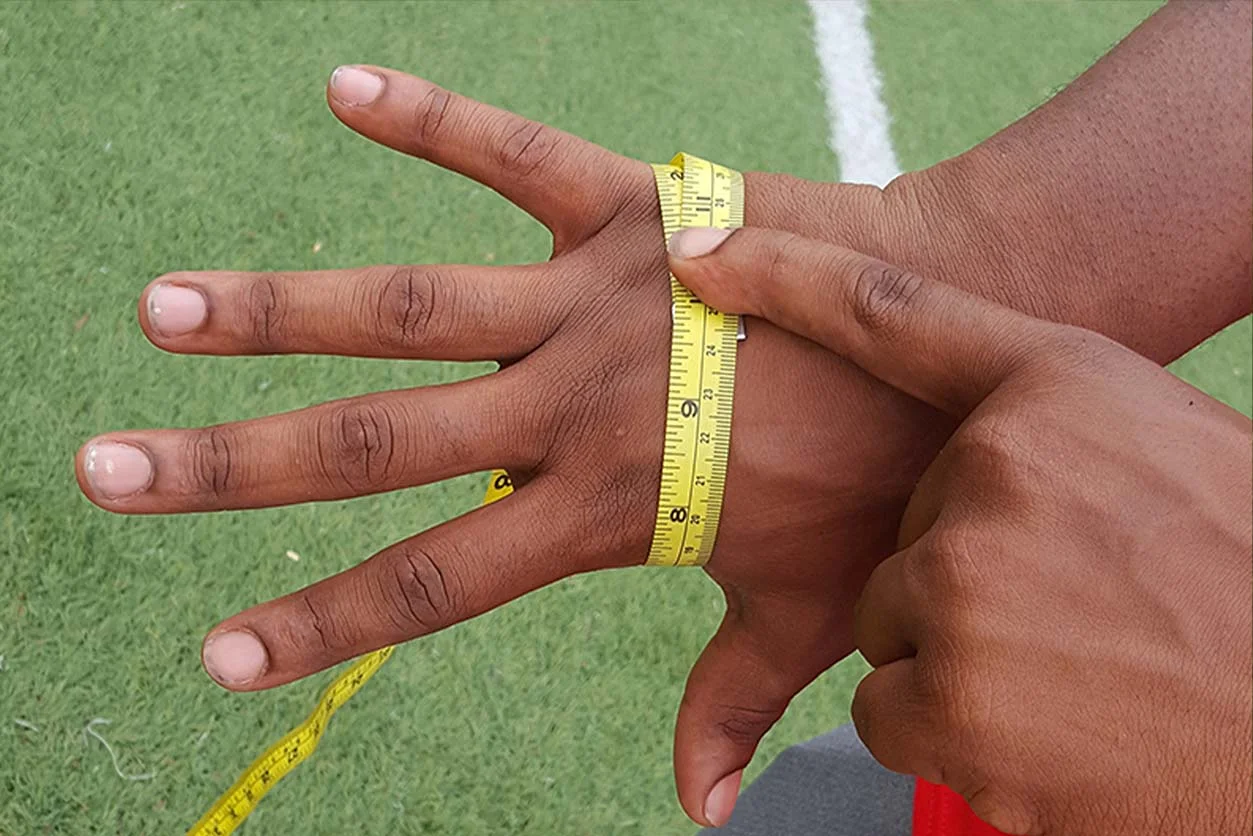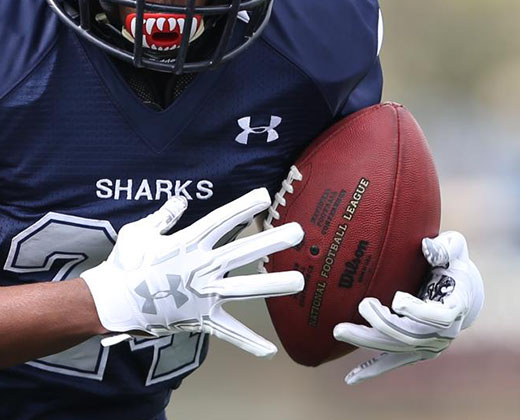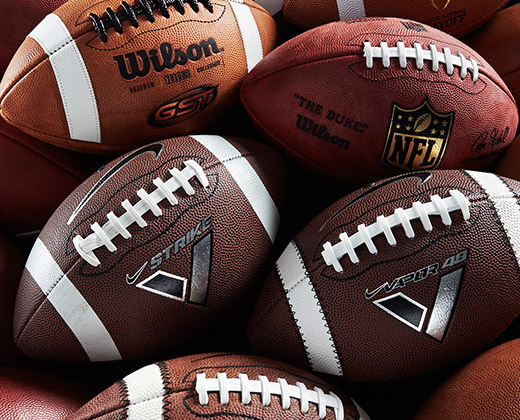Find the Best Football Gloves
Discover the difference between receiver and lineman gloves to help you find the right pair.
Are you a running back or receiver looking for more control of the ball? Or maybe an offensive lineman in need of additional hand protection? Then you may be ready to add a pair of football gloves to your gear.
Football gloves can enhance your grip, help combat challenging weather conditions and protect your hands and fingers. If you’re making a one-handed grab or going to battle in the trenches, let our Pro Tips team guide you to the perfect football gloves.
RECEIVER GLOVES
Receiver gloves are specifically designed for skill position players. These gloves make it easier for receivers, quarterbacks, tight ends and running backs to control the ball. Defensive backs can wear receiver gloves to help get a better grip to turn pass breakups into interceptions. Players who field kickoffs and punts can also wear these gloves to help with a big return.
Receiver gloves are typically made with:
- Thin, breathable material for movement and flexibility.
- Sticky adhesive palms that extend around the fingers and thumbs for extra grip in rain or shine.
- A slightly padded backhand aids in protection and helps absorb shock.
LINEMAN GLOVES
Due to the position’s tough and tumble nature, lineman gloves come designed to take the brunt of the impact. They can help protect your hands and fingers against hard hits. In addition to absorbing impact, they help provide protection to hands and fingers if stepped on when in the trenches. Half-finger lineman gloves allow centers to get a better feel of the ball.
Lineman gloves usually have the following qualities:
- Thick, firm material to help cushion your hands.
- Interior reinforcement helps defend your hands, fingers and knuckles.
- Heavy padding on both your backhand and palm for added support of hands, knuckles and wrists.
- Additional wrist support to help increase stability and limit range of motion.
FEATURES TO LOOK FOR
Most football gloves have some kind of ventilation. This can help keep your hands dry, cool and comfortable. Look for gloves that have a ventilated back and mesh between the fingers or around the knuckles. At the most intense moments of a game, sweaty palms might be the difference between making a play or not.
The glove’s material is also important. You want the material to be stretchable and synthetic. Your glove should also come in a seamless or reinforced-seam pattern. This should allow a better fit. It also can provide increased durability when exposed to harsh weather conditions.
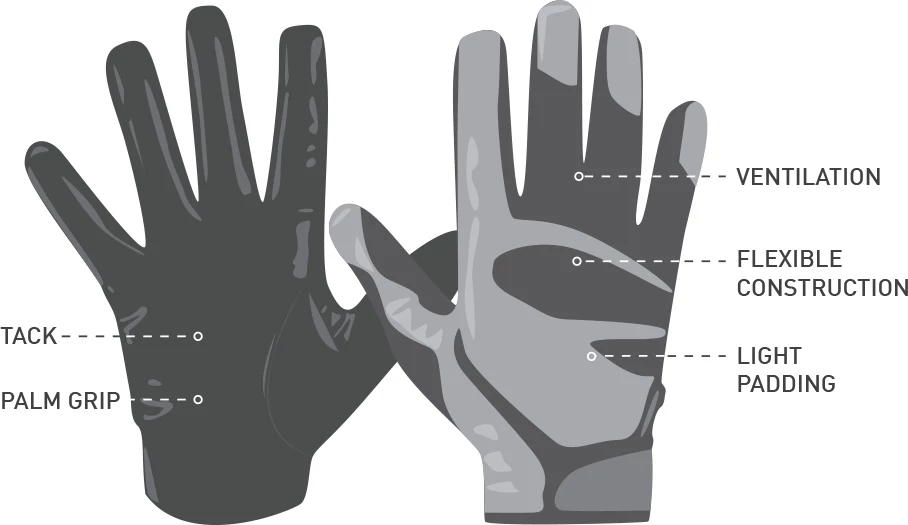
WHAT TO LOOK FOR IN RECEIVER GLOVES
- Lightweight and flexible construction
- Enhanced palm grip
- Tack from the palm to fingers
- Light padding on the back of hand
- Ventilation on back of hand and between fingers
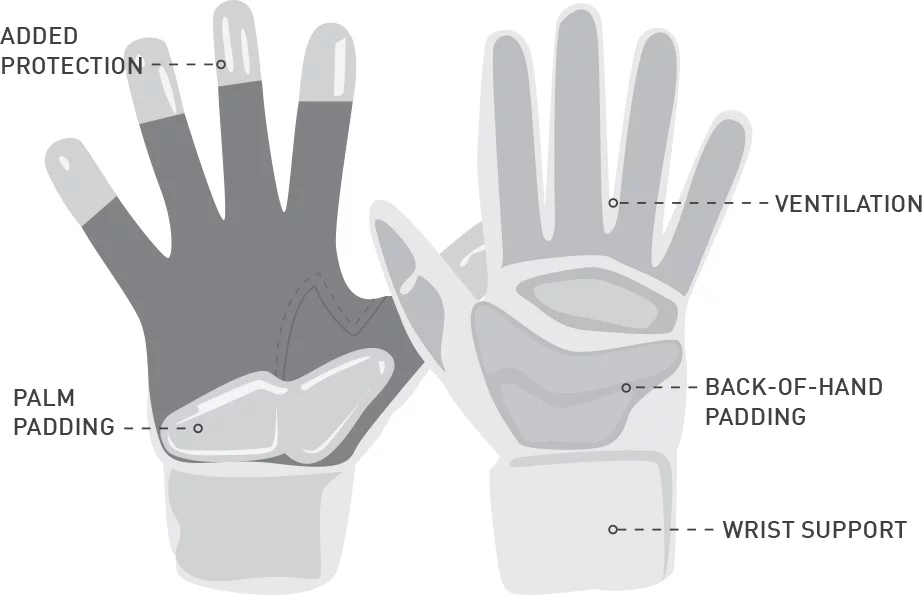
WHAT TO LOOK FOR IN LINEMAN GLOVES
- Heavy, durable materials
- Added protection for fingers
- Increased palm and back-of-hand padding
- Additional wrist support
- Ventilation on back of hand and between fingers
FINDING YOUR SIZE
Before buying a new pair of football gloves, you’ll want to make sure you have the right size. There are two methods to measuring your hands. It can be beneficial to measure your hands both ways. Brands can vary with which method they use:
Use a ruler or measuring tape to measure from the bottom of your palm to the tip of the middle finger on your dominant hand.
Use measuring tape to measure just below the knuckles all the way around your dominant hand.
After finding your measurements, consult a brand’s size chart for adult or youth football gloves. Youth gloves are for players from the Pee Wee leagues through junior high. Players can transition to adult gloves once they reach high school.
Trying on gloves can be beneficial. Different brands may run smaller or larger. You’ll want to find the fit that is right for you.
Don’t go into the game without the proper protection. The right pair of gloves might be the difference between failure and success on the field.
EXPLORE OUR BEST FOOTBALL GLOVES
Now that you’re up to speed on how to choose new football gloves, check out a few of our favorite picks.
*Disclaimer: Product availability may fluctuate due to inventory.
Now that you have the right gloves for your game, explore the Pro Tips Football Checklist and gear up with everything you need for a great season.



